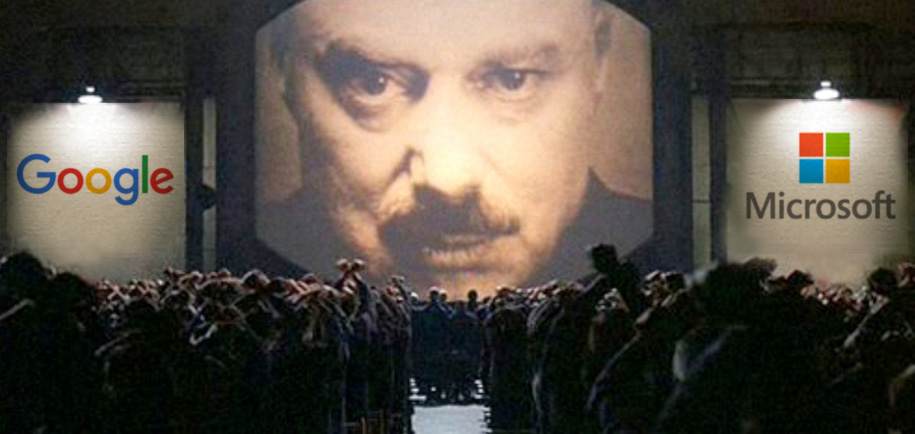Boost to Business Social Networking, or Dawn of a Know-it-All Cortana?
In mid-June 2016, Microsoft bought LinkedIn, the biggest business-oriented social networking platform out there, for $26.2 billion. As of the announcement, LinkedIn had 433 million users.
The big question everyone asked: Why?
Why did Microsoft want LinkedIn? Why would LinkedIn agree to the sale? That’s what we’re covering in this month’s WOOF!
Tech experts and journalists alike have suggested several reasons for the purchase:
- Owning Data. Buying LinkedIn gives Microsoft a treasure trove of data on business users, which brings greater ability to shape products & grow their business intelligence. There are even suggestions of LinkedIn data powering Delve, an Office 365 personalized search & intelligence tool.
- Social Intelligence. Microsoft could integrate social intelligence into daily office activities. For example, viewing the LinkedIn News Feed in your Office 365 apps.
- Cortana. With access to LinkedIn’s databases, Microsoft can empower Cortana like never before. Cortana can inform you about contacts, prospects, and other relevant information when you need it (e.g., sales or customer service).
- Integrations. Through integrations of LinkedIn data with Microsoft solutions, users get greater insights on leads or existing customers. Not just in Office 365 either—it can work in Skype for Business, and the Dynamics engine. In fact, the acquisition makes Microsoft Dynamics CRM a major player in the worldwide CRM market.
- Online Ads. Yes, LinkedIn Ads showing up in Office 365 is a possibility. Microsoft could also increase the effectiveness of account-based marketing campaigns in Bing Ads using LinkedIn data.
You can read the original memo from Microsoft CEO Satya Nadella here. Nadella spoke primarily about the Office 365 and Dynamics integrations. No mention of ads or Cortana upgrades.
At present, LinkedIn generates $3 billion in revenue a year, but it struggles with hundreds of millions of inactive members. Acquisition by Microsoft opens up whole new vistas (pardon the pun) for expansion. The move makes sense for them.
Does it make sense for Microsoft? That’s uncertain. What’s also uncertain is the privacy risks involved when a major software company acquires a major repository of business user data.
Choose Your Big Brother!

Most of us read George Orwell’s 1984 in school, and know the power of "Big Brother." Now we have more than one . . . Microsoft or Google.
Microsoft has always held a lot of power in the business world. A move like this only extends their power even further. For users on Office 365, they already control their data and Office apps. With the LinkedIn acquisition, they will also control their contacts. The potential for compromised privacy is extremely high.
Take Cortana. Adding LinkedIn data to Cortana’s engine could hugely improve its value, and thus its usage. However, it could also become a tool for businesses – or Microsoft itself – to spy on others. How? Windows 10 spying can equip Cortana with proprietary data, which it may leak into LinkedIn results. Cortana can easily cross the privacy threshold to where it becomes uncomfortably intrusive.
Social & blog conversations show many other business pros are worried too. Not just about privacy, but also about the potential changes Microsoft may make to LinkedIn. Readers fear (with some validation) that Microsoft will bombard them with ads, change LinkedIn features that help them with networking or job searches, or both.
Google is no better. They host your mail and your office applications via Google Docs. They own Nest so they know when you’re home or at work. Through their Android OS and Google Maps, they can even track your movements.
We live in the age of Big Microsoft, Big Apple, Big Google . . . choose your Big Brother!
Does this Affect My LinkedIn Account? What Should I Do?
Whenever there’s an acquisition, users of the affected services wonder what to do. In the case of LinkedIn, many of us maintain a profile there for our professional development & networking. Should you delete it? Is your privacy at risk?
Despite our misgivings, now’s not a time to panic. The deal is still in its early stages. We’ll most likely see changes come in later 2016 and next year.
For now, here’s what you can do to protect your information.
- If you use LinkedIn, review your profile. Make sure you’re OK with the information displayed and the people in your network. Remember, if it’s online, it’s public!
- Otherwise, continue using LinkedIn normally. Integrations will take time to complete, and nobody (not even Microsoft) knows what form they will take. We may see big changes in how Microsoft makes the LinkedIn integration work.
- If you are concerned about privacy, you can get off LinkedIn! Here are instructions for deleting your LinkedIn profile.
- If you enjoy business networking online, but don’t want to stay on LinkedIn, alternatives do exist. Here are some options:
- For getting rid of online ads, don’t forget about AdBlock Plus!
What do you think about LinkedIn now that Microsoft has bought them? Please send your feedback to woof@planetmagpie.com.